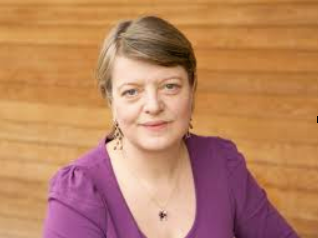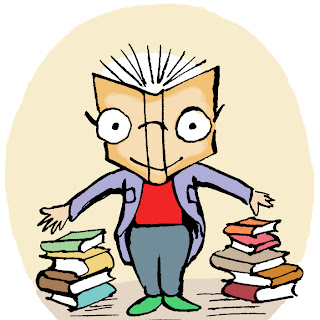How to Write Picture Books – A Nosy Crow Masterclass
On 12 September 2015, I went to Nosy Crow headquarters to learn more about the children’s book market and how to submit the perfect picture book.
It was an information packed day led by the formidable Kate Wilson, Nosy Crow’s Managing Director.
We were given an insight in to the children’s picture book market in 2015 and more specifically given the editorial essentials for writing picture books.
We also heard from literary agent Loiuse Lamont, of LBA Books, who shared some key tips on what she looks for in a submission and common errors that she sees in picture book manuscripts.
Over lunch we had the opportunity to have a one-to-one manuscript critique session, which was really useful.
After lunch, Tracey Corderoy, award-winning author of Shifty McGifty and Slippery Sam, Hubble Bubble, Granny Trouble and Just Right for Two told us how she eventually got published and was rejected weekly for three years! She explained her writing process, where she gets inspiration from and the challenges of writing in rhyme and prose.
We then heard how illustrator and author Leigh Hodgkinson, creator of Goldilocks and Just the One Bear, Troll Swap and The Big Monster Snoreybook makes great picture books by putting two things that wouldn’t normally go together.
We were told that the children’s book market is robust. 2014 was the biggest year for children’s books in ten years and over £300,000,000 was spent on books that year. Growth in the children’s book sales is strong globally.
Kate Wilson explained that pre-school and picture books take up 42% of the market, children’s and YA fiction take up another 42%, children’s and YA non-fiction take up 12% of and annuals take up 4% of the market. She shared figures and statistics from Neilsen BookData with us (this is expensive information to get hold of).
The best-selling book in 2014 was Awful Auntie by David Walliams. In 2013 it was Demon Dentist, Gangsta Granny and Diary of a Wimpy Kid.
The Gruffalo
Alfie and Alfie’s Shop
The picture book market is difficult to crack but it has longevity. Kate Wilson published The Gruffalo and only published 1500 hardback copies initially, not realising how well it would do. In fact I just searched Amazon to find the photo below and it is out of stock!
-We have book chains such as Waterstones, WH Smiths, Blackwells and Foyles.
- We have independent bookshops, stylish children’s shops, museums and galleries. - Supermarkets
- Online (Amazon or other stores).
50% of books in the UK are bought online. However e-books for children are not catching on. Children expect apps to do a lot and it is very costly to develop them.
Kate went through Open Very Carefully and showed us the various languages it was translated to worldwide. She explained a book that is entirely dependent on rhyme or puns can’t be translated.
Pirates, fairies, dinosaurs, pants and aliens appeal to children. Books that are funny with humour and also scary books such as Funnybones do well.
In The Tiger who Came to Tea, something extraordinary happens in ordinary daily life. The tiger interrupts the ordinary world. In Goldilocks and Just the One Bear, the bear and Goldilocks meet when older in New York. In Poles Apart, something has to be found, there is a quest.
Open Very Carefully is a book where words get eaten. It’s different because the crocodile eats the words.
Overall it was a brilliant day, spent with professionals at the top of their game. I left feeling inspired and wrote a picture book draft on the train journey back home. Now I just need to type it up, edit it and submit it!
Two years ago A. M. Dassu set up a blog which was nominated for the UK Blog Awards in the same year. Since then she has become a featured writer for The Huffington Post and written for the Times Education Supplement. She has just finished writing a gritty YA novel and is planning her first school workshop this month. You can find her on Twitter @a_reflective
We were given an insight in to the children’s picture book market in 2015 and more specifically given the editorial essentials for writing picture books.
 |
| Kate Wilson, Managing Director of Nosy Crow |
Over lunch we had the opportunity to have a one-to-one manuscript critique session, which was really useful.
After lunch, Tracey Corderoy, award-winning author of Shifty McGifty and Slippery Sam, Hubble Bubble, Granny Trouble and Just Right for Two told us how she eventually got published and was rejected weekly for three years! She explained her writing process, where she gets inspiration from and the challenges of writing in rhyme and prose.
We then heard how illustrator and author Leigh Hodgkinson, creator of Goldilocks and Just the One Bear, Troll Swap and The Big Monster Snoreybook makes great picture books by putting two things that wouldn’t normally go together.
The Children’s Book MarketNosy Crow is an award winning, independent publishing house, which was set up in 2011. It is now the fourteenth largest publisher in the UK (Penguin Random House being the biggest).
We were told that the children’s book market is robust. 2014 was the biggest year for children’s books in ten years and over £300,000,000 was spent on books that year. Growth in the children’s book sales is strong globally.
Kate Wilson explained that pre-school and picture books take up 42% of the market, children’s and YA fiction take up another 42%, children’s and YA non-fiction take up 12% of and annuals take up 4% of the market. She shared figures and statistics from Neilsen BookData with us (this is expensive information to get hold of).
The best-selling book in 2014 was Awful Auntie by David Walliams. In 2013 it was Demon Dentist, Gangsta Granny and Diary of a Wimpy Kid.
The top ten picture books in 2014 were:In 2013 the best picture book sellers were:
- Hungry Caterpillar
- We’re Going on a Bear Hunt
- The Tiger Who Came To Tea
- Frozen
- The Gruffalo
- The Gruffalo’s Child
- Scarecrow’s Wedding
- Stick Man
- Superworm
- The Singing Mermaid
The Gruffalo
Alfie and Alfie’s Shop
The picture book market is difficult to crack but it has longevity. Kate Wilson published The Gruffalo and only published 1500 hardback copies initially, not realising how well it would do. In fact I just searched Amazon to find the photo below and it is out of stock!
What Is Special About A Picture Book:
- They are hugely tricky to get right.
- Children are a demanding audience
- Writers contribute 50% of a book
- Picture books are shared, adults read to a child.
- They are bought by an adult who mediates the experience for the child.
- When writing one, you must think what’s in it for the adult.
- They give access to experiences and emotions. They enable children to walk in other people’s shoes.
- A picture book is a performance made to be performed.
- How your book reads aloud is critical.
- A good picture book will be repeated. It also has to be one a parent can bear to repeat! Repetition helps for them to be remembered.
Picture Books As A Product:The UK publishes 8000-9000 children’s books per year. There are multiple places to sell picture books in the UK:
-We have book chains such as Waterstones, WH Smiths, Blackwells and Foyles.
- We have independent bookshops, stylish children’s shops, museums and galleries. - Supermarkets
- Online (Amazon or other stores).
50% of books in the UK are bought online. However e-books for children are not catching on. Children expect apps to do a lot and it is very costly to develop them.
Kate went through Open Very Carefully and showed us the various languages it was translated to worldwide. She explained a book that is entirely dependent on rhyme or puns can’t be translated.
What An Editor Is For:
- 1. Vision - to see what the book will be when it is finished.
- 2. Shapers - They shape the book, rework it and develop dialogue. Shifty McGifty was a 32-page book (12 spreads) but it didn’t work that way. It was reworked and made in to a 14-page spread book and then it sold.
- 3. Champion – they persuade publishers and foreign publishers to buy the book.
- 4. Commercial – they can make sense of the market and are able to mediate between you and what will sell.
Books That Sell:Your book needs to have broad appeal for the UK market and abroad. It has to be child centric; Goodnight Tractor appeals to parents because it is a bedtime story. The Worst Princess knows its market; children and parents who aren’t keen on pink.
Pirates, fairies, dinosaurs, pants and aliens appeal to children. Books that are funny with humour and also scary books such as Funnybones do well.
In The Tiger who Came to Tea, something extraordinary happens in ordinary daily life. The tiger interrupts the ordinary world. In Goldilocks and Just the One Bear, the bear and Goldilocks meet when older in New York. In Poles Apart, something has to be found, there is a quest.
Open Very Carefully is a book where words get eaten. It’s different because the crocodile eats the words.
Kate Wilson’s Advice
- When writing your picture book, you need to empower the child character, make them solve a problem. Think about power and give the child power.
- Don’t give messages in a book. If you are going to teach something, make it a part of the story so it’s not obvious. Do it lightly. Princess Daisy and The Dragon and The Nincompoop Knights gives the message that girls can fight, but it is embedded in the story.
- Before submitting a manuscript, you must ask yourself if there is a strong narrative in the story to publish it.
- If you sum up your book in to a sentence, the publisher can easily pitch it to buyers such as Waterstones.
Overall it was a brilliant day, spent with professionals at the top of their game. I left feeling inspired and wrote a picture book draft on the train journey back home. Now I just need to type it up, edit it and submit it!
Two years ago A. M. Dassu set up a blog which was nominated for the UK Blog Awards in the same year. Since then she has become a featured writer for The Huffington Post and written for the Times Education Supplement. She has just finished writing a gritty YA novel and is planning her first school workshop this month. You can find her on Twitter @a_reflective


















Love this - sounds like a brilliant, useful day!
ReplyDeleteFascinating - even for someone who doesn't write picture books (but appreciates them!)
ReplyDeleteWhat a fabulous and informative post- thanks for sharing.
ReplyDeleteGreat piece!
ReplyDeleteYour book making advice cover my main mistake in education thanks for share it how to write research statement for faculty position .
ReplyDeleteAlmost providing each and every part for students' success and essay writers
ReplyDeleteare the only elements which can said to be of most importance, so we would also be able to produce such more ideas.
Play with facts and statistics instead of someone’s subjective point of view, have a peek at this web-site here.
ReplyDeleteVery very informative -- thanks so much! I wish I could attend half the workshops that are available (almost attended SCBWI Winter Conference in NY) but appreciate how clearly you shared these insights.
ReplyDelete